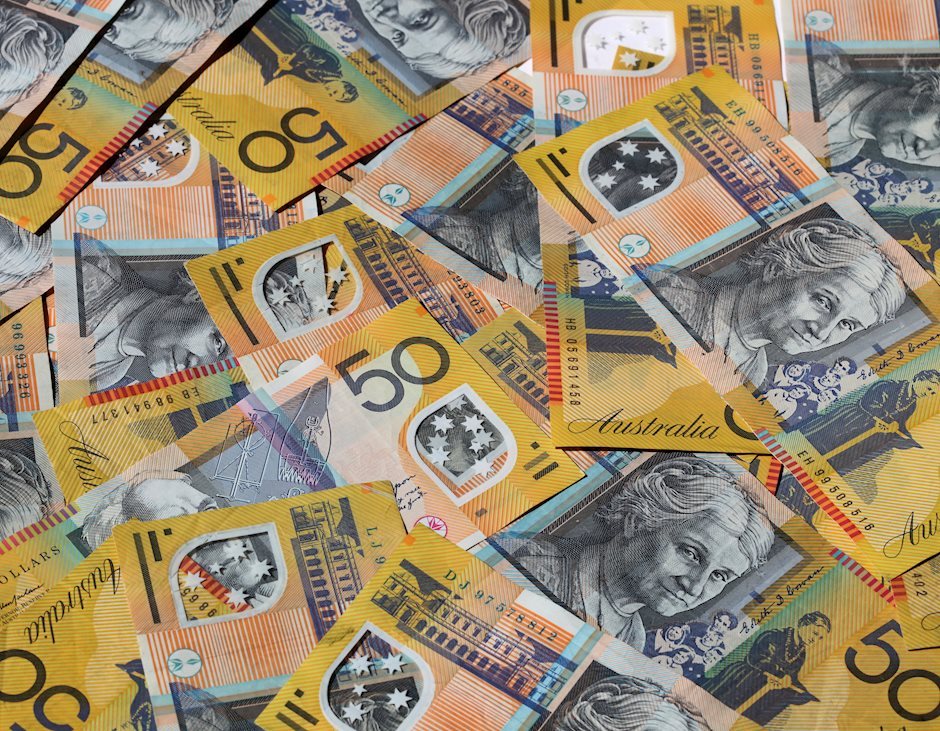AUD/USD plunges to near 0.6400 as weak Aussie GDP boosts RBA dovish bets
- AUD/USD plummets to near 0.6400 as the Australian Dollar weakens after slower-than-expected Australian Q3 GDP growth.
- Soft Aussie Q3 GDP data has boosted expectations for RBA interest rate cuts in April 2025.
- The US Dollar gains higher ahead of Fed Powell’s speech.

The AUD/USD pair dives more than 1% to near the round-level support of 0.6400 in Wednesday’s European session. The Aussie pair plummets as the Australian Dollar (AUD) has been hit hard by weaker-than-projected domestic output data for the third quarter of this year.
The Australian Bureau of Statistics reported that the Australian economy surprisingly expanded at a slower-than-expected pace of 0.8% compared to the same quarter of the previous year against the 1% growth seen in the previous quarter of this year. Economists estimated the annualized Q3 GDP growth of 1.1%. On a quarterly basis, the Australian economy expanded by 0.3%, slower than expectations of 0.4% but faster than the former reading of 0.2%.
Weak Q3 GDP data has boosted the Reserve Bank of Australia's (RBA) dovish bets. Growing concerns over Australian economic growth have prompted expectations that the RBA could start reducing interest rates from its policy meeting in April 2025.
Meanwhile, a slight upside move in the US Dollar (USD) has also weighed on the Aussie pair. The US Dollar Index (DXY), which tracks the Greenback’s value against six major currencies, rises to nearly 106.60 ahead of Federal Reserve (Fed) Chair Jerome Powell’s speech at 18:45 GMT. Fed Powell is expected to provide cues about whether the central bank will continue easing its monetary policy further in its meeting on December 18.
In today’s session, investors will also focus on the United States (US) ADP Employment Change and the ISM Services PMI data for November.
Economic Indicator
Gross Domestic Product (YoY)
The Gross Domestic Product (GDP), released by the Australian Bureau of Statistics on a quarterly basis, is a measure of the total value of all goods and services produced in Australia during a given period. The GDP is considered as the main measure of Australian economic activity. The YoY reading compares economic activity in the reference quarter compared with the same quarter a year earlier. Generally, a rise in this indicator is bullish for the Australian Dollar (AUD), while a low reading is seen as bearish.
Read more.Last release: Wed Dec 04, 2024 00:30
Frequency: Quarterly
Actual: 0.8%
Consensus: 1.1%
Previous: 1%
Source: Australian Bureau of Statistics
The Australian Bureau of Statistics (ABS) releases the Gross Domestic Product (GDP) on a quarterly basis. It is published about 65 days after the quarter ends. The indicator is closely watched, as it paints an important picture for the economy. A strong labor market, rising wages and rising private capital expenditure data are critical for the country’s improved economic performance, which in turn impacts the Reserve Bank of Australia’s (RBA) monetary policy decision and the Australian dollar. Actual figures beating estimates is considered AUD bullish, as it could prompt the RBA to tighten its monetary policy.
Author

Sagar Dua
FXStreet
Sagar Dua is associated with the financial markets from his college days. Along with pursuing post-graduation in Commerce in 2014, he started his markets training with chart analysis.

















